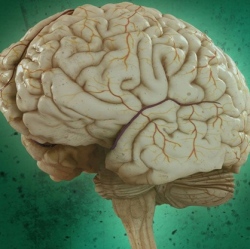
Carnegie Mellon University’s BrainHub will host its first Neurohackathon, sponsored by Qualcomm, May 24-25. The event is one of the first hackathons to engage computer scientists in using one of the hardest systems to crack: the structure of neural data and the brain.
The brain has billions of neurons and trillions of synapses, making it an excellent source of big data. BrainHub researchers from across CMU’s Pittsburgh campus have collected vast amounts of information from the brain using techniques including MRI and electrophysiological recordings.
Through this hackathon, they hope to develop new methods for analyzing and understanding this data and foster new collaborative relationships between neuro-, data and computer scientists.
Getting these smart and creative young minds to look at neural data will bring 21st century tools and ideas to brain science research,” said Alison Barth, interim director of BrainHub and professor of biological sciences.
During the hackathon, graduate student will be given data sets gathered from the labs of neuroscience researchers in the College of Engineering, Dietrich College of Humanities and Social Sciences, Mellon College of Science and School of Computer Science and asked to develop solutions for analyzing the data. Datasets include:
Human brain neuroanatomy from MRI images: Assistant Professor of Psychology Tim Verstynen and Associate Professor of Machine Learning Aarti Singh mapped the trajectories of axonal connections using MRI data collected from 842 subjects and cataloged in the human connectome project. Teams will develop a supervised learning classifier to help classify pathways and identify false pathways caused by data noise.
How is running represented in the mouse cortex: Teams will analyze fluorescent activity recorded from 124 neurons while a mouse was running and at rest to try to establish a relationship between neural activity and mouse behavior. The data was recorded using two-photon calcium imaging in the lab of Assistant Professor of Biological Sciences Sandra Kuhlman, with assistance from Assistant Professor of Biomedical Engineering Steven Chase.
Epigenetic regulation of genome function and brain disease: Every brain cell has the same genomic sequence, but chemical modifications, referred to as epigenetics, result in a large diversity among cell types. Teams will use data on epigenetic changes across 80 human brain regions to determine if those changes can be linked to different brain regions and associated with different diseases. The data was gathered by Assistant Professor of Computational Biology Andreas Pfenning.
Cell-type identification through electrophysiological fingerprinting: Neurons in the cerebral cortex can be differentiated from each other by gene expression, anatomy and firing patterns. However, it is difficult to determine cell type using neuronal recordings taken from living animals.
Recent studies have found that spontaneous firing patterns of neurons might contain a fingerprint for identifying cell type. Using data collected by Barth, teams will identify the fingerprints for different cell types, and test their classification method using recordings from unidentified cells.
